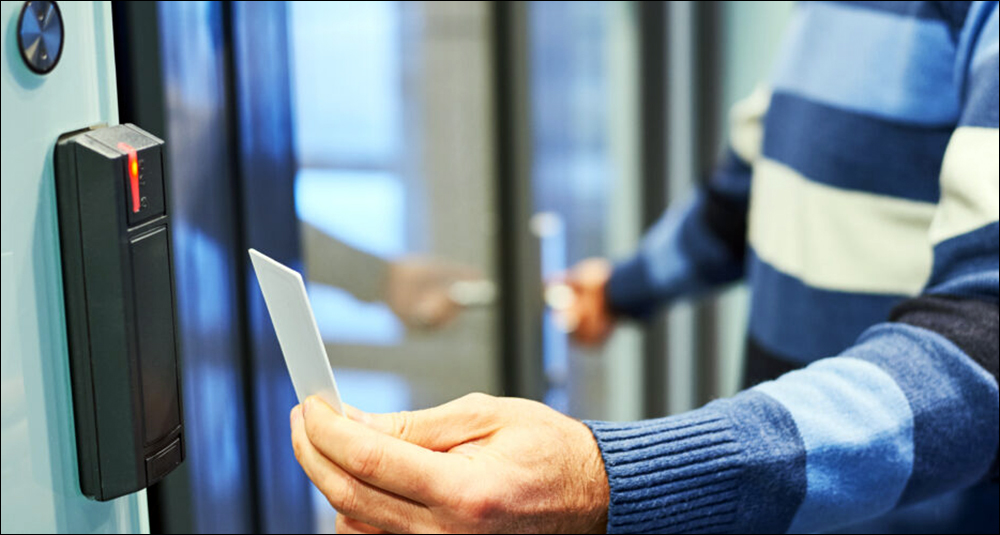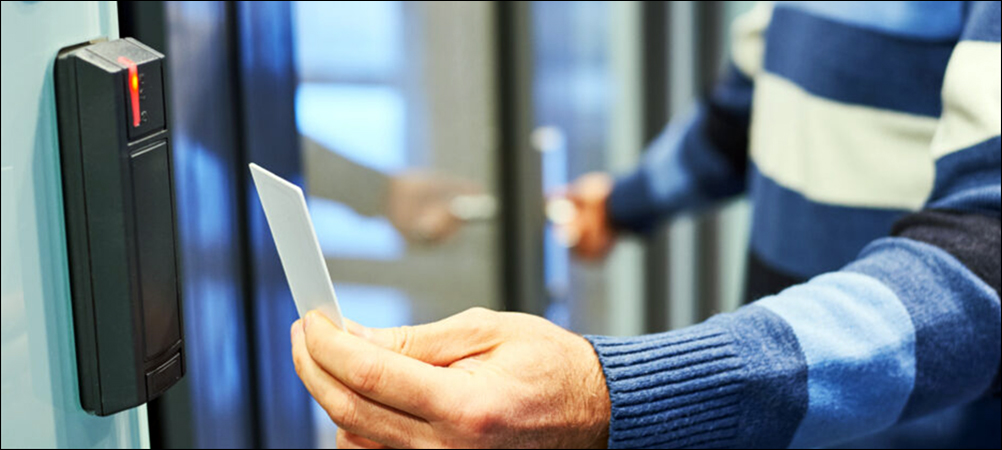Ed. Note: A version of this article originally appeared at Campus Safety.
As I crunched the raw data from this year’s Campus Safety Access Control and Lockdown Survey, I encountered some very interesting contradictions. (More than 400 school, university and healthcare protection professionals participated in this research project, and readers can download the charts here.)
On the one hand, compared to what was revealed in our 2019 survey, a lot more respondents this year say they’ve purchased equipment throughout the past two years and/or are considering buying more in the next two years. On the other hand, fewer say they can lockdown 100 percent of their campuses. You would think that if more schools, universities and healthcare facilities have purchased more access-control and lockdown solutions, that they would report improvements in their lockdown capabilities, right?
I can’t explain this contradiction with the data I have at my disposal. One possibility, however, is that the increase in purchasing and the due diligence required for this type of activity has led our survey takers to become more aware of their lockdown vulnerabilities. Most of us have investigated an issue, only to find that the problem is much worse than we had previously thought. This contradiction is just one of the many interesting data points revealed in the results from the 2021 survey.

Photo via Adobe, by Kadmy
Campuses Continue to Acquire More Systems, Equipment
As stated previously, a lot of purchasing appears to have been going on in the educational and healthcare sectors during the past two years. Eighty-four percent of respondents say they’ve purchased card and/or biometric access-control systems. That’s 22 percentage points more than what was revealed in our 2019 survey on this topic. This year, 45 percent say they are considering adding more of these systems in the next two years. That’s 8 percent more than two years ago.
Purchasing of locks and/or door hardware has also been strong, with 78 percent of respondents saying they’ve acquired this type of equipment throughout the past two years. Additionally, demand for these products only appears to be increasing, with 45 percent of survey takers saying they are considering buying locks and/or door hardware during the next two years. That’s 10 points more than what respondents said in 2019.
Demand for visitor management is also extremely strong, particularly in schools. Eighty-three percent say they purchased visitor-management systems throughout the past two years, with 29 percent saying they are considering buying more of these systems in the next two years. Healthcare facility respondents have also been very active in acquiring systems that manage guests (75 percent), with more than half (59 percent) saying they are considering purchasing more of this type of solution. Adoption of security front entrance vestibules has dramatically increased as well, with 74 percent of respondents saying they’ve implemented or upgraded this solution during the past two years.
Near Field Communication (NFC)- and Bluetooth Low Energy (BLE)-based mobile phone access control was added to this question this year, and overall, there have been a lot of purchases of this type of solution recently. Nearly two out of three (62 percent) respondents overall have purchased NFC or BLE solutions throughout the past two years, with nearly half (45 percent) saying they are considering buying more.
Purchases of fences have also increased, from 36 percent in 2019 to 67 percent in this year’s survey. The same can be said for window safety and/or security solutions. Two years ago, 33 percent of respondents said they purchased these solutions during the past two years, while in 2021, 69 percent said they’ve recently made purchases. Even the adoption of lockdown/shelter-in-place policies and procedures, which was very strong in 2019 (81 percent) increased to 83 percent this year overall.
Fewer Respondents Can Lockdown All of Their Buildings
When an emergency happens, it’s critical that a facility be able to lockdown and do so quickly. Unfortunately, this year’s survey found that there has been quite a bit of backsliding on this front. Compared to 2019, when we last asked our readers how much of their campus can lockdown, there has been a significant drop in the percentage of respondents who now say 100 percent—from 30 percent two years ago to 17 percent now. The good news, however, is that the vast majority of respondents say they can lockdown more than half of their campus—86 percent this year compared to 79 percent in 2019.
Not surprisingly, K-12 schools/school districts still have the greatest ability to lockdown. Seventy-nine percent say they can lockdown 75 to 100 percent of their campus. Unfortunately, that’s an 11 percent decrease from two years ago, when 90 percent of K-12 respondents said they could lockdown 75 to 100 percent of their buildings. When we asked those respondents who can lockdown how quickly they can do so, only 39 percent said in 5 minutes or less, compared to 71 percent two years ago. More respondents, however, now say they can lockdown in 6-10 minutes (28 percent compared to 15 percent in 2019). K-12 campuses have the fastest lockdown response times. Eight in 10 respondents say they can lockdown their campuses in 10 minutes or less.
Door Hardware, Visitor Tracking Get High Marks
Although most threats to a school, college or hospital come from someone who is already on campus, attacks coming from off-campus do pose a problem, as the victims of the Sandy Hook and Parkland mass shootings will attest. Overall, more than seven out of 10 of our survey takers believe they have adequate door hardware to protect against outside threats. Hospitals are the most confident (80 percent), while K-12 and college respondents are less confident (70 percent and 69 percent respectively). After a lockdown is implemented, it’s critical that campuses can account for everyone in the building, including visitors, volunteers and contractors. According to this year’s survey, nearly eight in 10 respondents (79 percent) are “really” or “moderately” confident they can do so.
Due to the responsibilities of K-12 schools for children, as well as the duty of care expected of hospitals for their patients, it’s not surprising that both K-12 and healthcare respondents had higher degrees of confidence in accounting for everyone in their buildings during a lockdown—87 percent and 83 percent respectively said they are “really” or “moderately” confident. That said, colleges and universities weren’t too far behind their healthcare and K-12 brethren. Nearly three out of four said they were “really” or “moderately” confident.
Campuses Happier with Coverage, Quality of Access, Lockdown Solutions
Compared to two years ago, when we asked our readers how satisfied they were with the coverage of their access control, locks and door hardware, we’ve seen a 20-point increase in satisfaction overall, with 75 percent rating their coverage as excellent or good, compared to only 55 percent in 2019. Currently, our healthcare respondents are slightly less enthusiastic about their coverage compared to K-12 and higher education survey takers. About one in four healthcare respondents (26 percent) rate their coverage as excellent, compared to 28 percent of school and 32 percent of college participants.
Survey participants are also more satisfied with the quality of their access-control systems, locks and door hardware at present than they were in 2019. Nearly three in five (71 percent) rate it as excellent or good now, compared to only 56 percent two years ago. Higher education and K-12 school and district respondents were the most likely to give an excellent rating (30 percent and 29 percent, respectively) compared to hospitals (26 percent).
Compared to our 2019 survey results, the percentage of campuses experiencing extremely or very challenging issues associated with physical access control has remained remarkably constant. “Campus layout,” once again tops the list at 39 percent, while “tracking and managing keys” comes in second at 33 percent. “Lack of metal detection or our detectors need to be upgraded” comes in third on this list. The percentage of campuses experiencing extremely challenging or very challenging issues associated with their policies and personnel has also remained remarkably constant when compared to the survey from two years ago.
The most significant change? Six percent more respondents say their issues with IT department buy-in are extremely challenging or very challenging—up from 18 percent in 2019 to 24 percent this year. That being said, “Policies supporting our access-control system(s) don’t exist or the ones we have need to be upgraded” continues to be the biggest thorn in the side of campus security professionals. A third say this issue is extremely or very challenging for them (32 percent said the same thing in 2019).
Additionally, the maintenance and configuration of locks and door hardware continues to pose challenges to this year’s survey participants. There is very little change in the answers to both of these questions this year compared to 2019—44 percent this year for maintenance compared to 42 percent two years ago, and 36 percent now compared to 37 percent previously.
There has been significant improvement, however, in training. Although nearly half (48 percent) of this year’s respondents say “Students, staff, administrators and teachers are not trained on our access control policies or don’t follow our policies,” that’s way better than the 61 percent in 2019. The same can’t be said for doors not having locks on them that should. More than a third (37 percent) of this year’s respondents say that “Doors that should have locks on them do not.” That’s up from 32 percent two years ago.
When it comes to access-control technology, more respondents this year than in 2019 say they are experiencing some challenges, although those issues are only marginally or somewhat challenging, rather than very or extremely challenging. When you compare the “Little or no challenge” columns from this survey and the previous survey, you see that things like finding a good integrator, having enough expertise or maintenance are posing more problems for our survey takers than two years ago.
The issuance of ID cards poses challenges for many respondents. A significant portion of higher education and healthcare participants say they have a slow ID card issuance process (40 percent and 34 percent respectively); printer reliability/maintenance challenges (36 percent and 46 percent); smart card management problems (46 percent and 42 percent); and the inability to issue cards outside of the card office (38 percent). Most of those challenges don’t impact K-12 campuses or districts as much.
Robin Hattersley-Gray is the editor-in-chief of Campus Safety. She has been covering the security and campus law-enforcement industries since 1998 and is a specialist in school, university and hospital security, public safety and emergency management, as well as emerging technologies and systems integration. Robin joined CS in 2005 and has authored award-winning editorial on campus law enforcement and security funding, officer recruitment and retention, access control, IP video, network integration, event management, crime trends, the Clery Act, Title IX compliance, sexual assault, dating abuse, emergency communications, incident management software and more. She has been featured on national and local media outlets and was formerly the associate editor of the trade publication Security Sales & Integration. She obtained her undergraduate degree in history from California State University, Long Beach.


